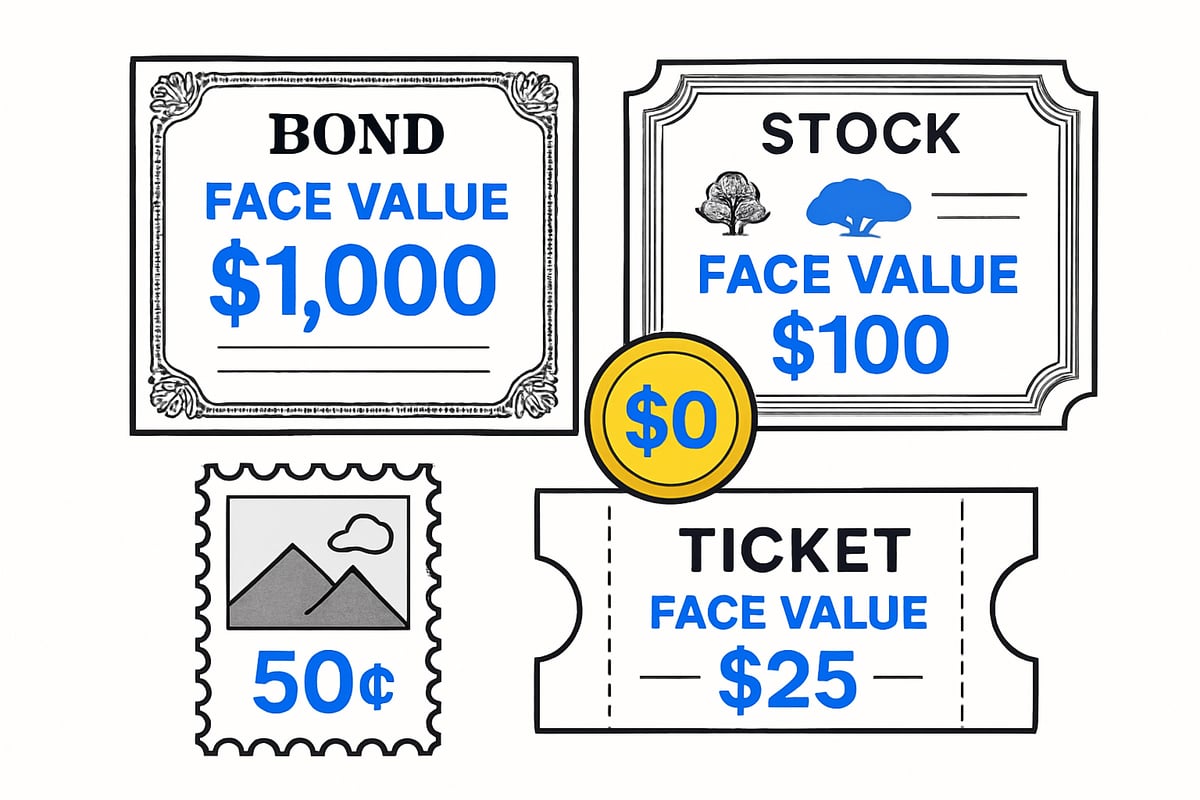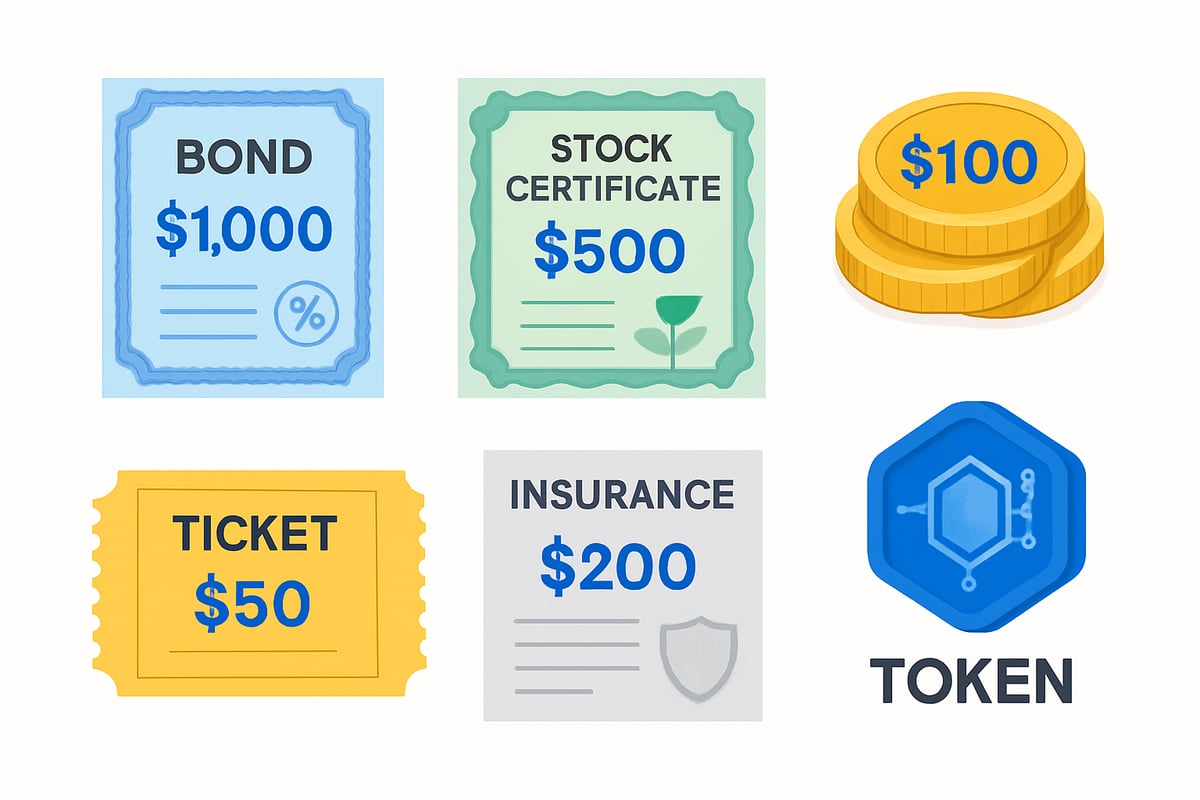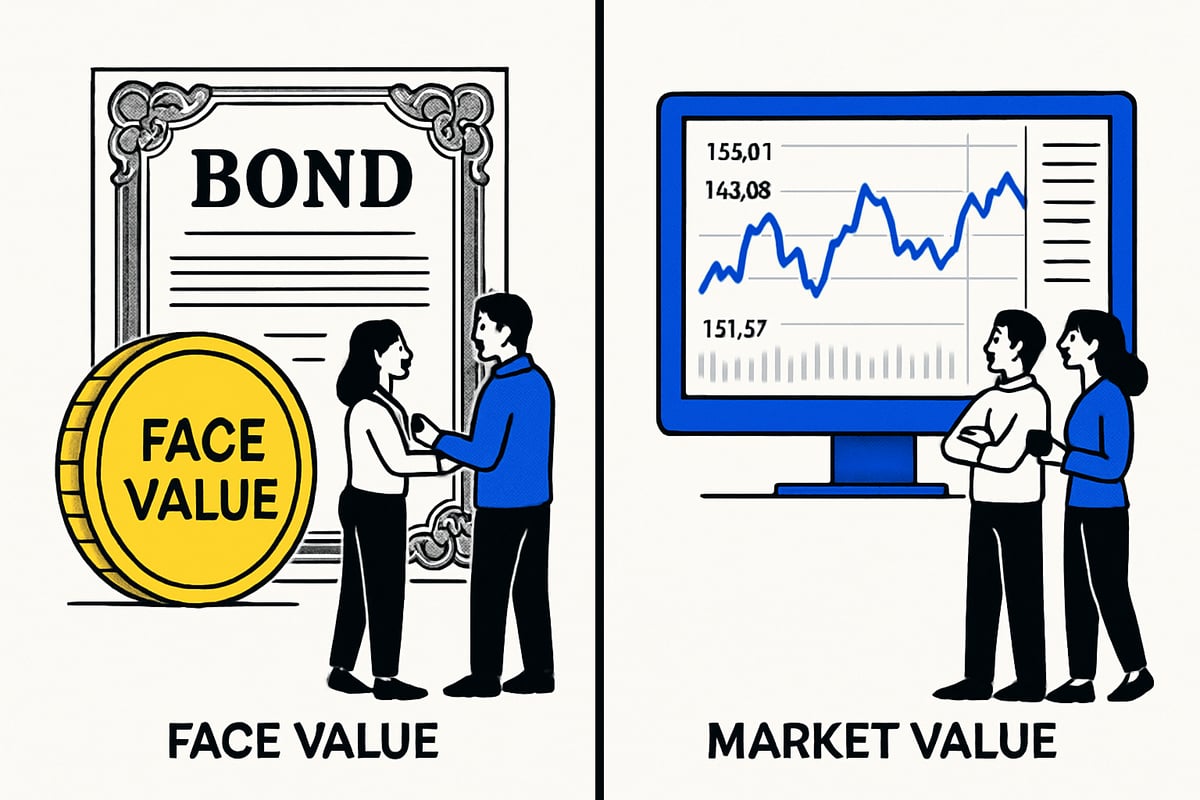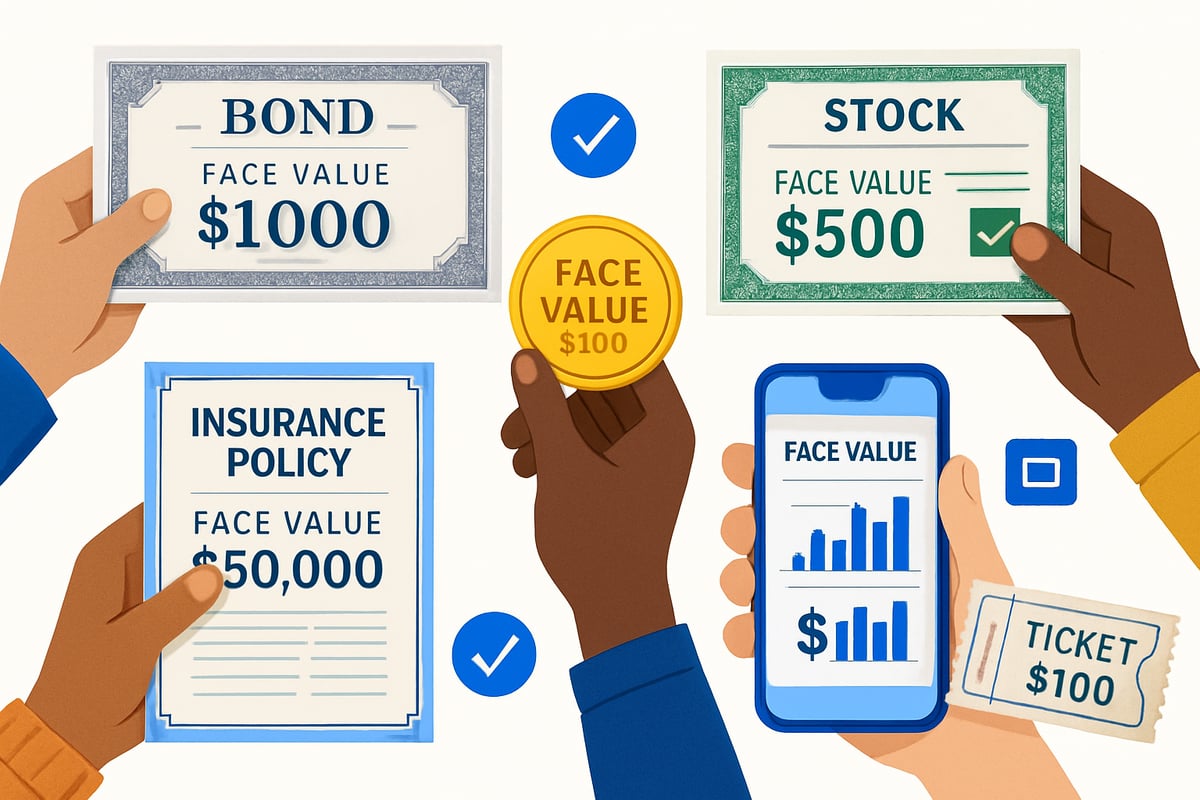Face Value Guide: Understanding Meaning and Uses in 2025
In 2025, understanding face value is more critical than ever for anyone involved in finance, investing, or everyday transactions. As financial markets evolve and digital assets become mainstream, the concept of face value continues to guide decisions and shape outcomes.
This comprehensive guide will clarify what face value means, why it matters, and how it is used across different settings. You will discover how face value compares to market value, learn practical calculation methods, and explore new trends shaping its role in modern life.
Whether you are a professional, investor, or simply curious, this article provides clear insights and actionable knowledge to help you navigate face value with confidence.
What Is Face Value? Definitions and Core Concepts
Understanding face value is fundamental for anyone engaging with financial instruments in 2025. At its core, face value refers to the nominal amount printed or declared on a bond, stock certificate, coin, stamp, or ticket. It represents the legal or stated value assigned by the issuer, serving as an anchor in transactions and contracts. Unlike market value, which fluctuates with supply and demand, face value remains fixed throughout the life of most instruments. For example, a $100 bond, a $1 coin, or a $50 concert ticket all have their face value clearly marked. In many contexts, you may also hear the terms "par value" or "nominal value" used interchangeably. To see a detailed comparison between face value and market value, visit Face Value: Definition in Finance and Comparison With Market Value. This foundational concept provides a reference point, regardless of how an asset's price moves in the market.

The Basic Definition of Face Value
Face value has deep historical roots in the world of currency and finance. In early economies, assigning a fixed face value to coins and government notes helped establish trust and enabled standardized trade. Gold coins, for instance, were stamped with a face value to certify their worth. As financial markets evolved, face value became central to the issuance of bonds and stocks, providing a clear baseline for transactions. Despite inflation and market volatility altering perceived worth, face value continues to play a vital role. For example, in 2025, over 80% of global bonds are still issued at face value. This enduring relevance makes understanding face value an essential component of financial literacy today.
Historical Evolution and Importance
Face value operates differently across asset classes. In bonds, it marks the principal amount repaid at maturity. For stocks, face value—often called par value—represents a share's legal capital, though its practical significance has diminished in many modern markets. Coins and stamps display their face value as legal tender, but collector demand can drive their market price far above this figure. Insurance policies list a face value as the guaranteed payout in the event of a claim. For example, U.S. Treasury bonds, company shares, and postage stamps all use face value, but its application varies. Government-issued instruments tend to emphasize face value, while corporate assets may use it more symbolically. In 2025, thousands of new securities are introduced each year with explicit face values stated in legal documentation.
Face Value Across Different Asset Types
Mastering face value terminology is crucial for navigating financial documents in 2025. Common terms include:
- Par Value: Typically used for bonds and shares, synonymous with face value.
- Nominal Value: Another synonym, often found in international markets.
- Redemption Value: The amount repaid at maturity or upon claim.
- Ticket Value: The price printed on event or transport tickets.
You may encounter abbreviations like "FV" (face value), "PV" (par value), and "RV" (redemption value) in prospectuses or insurance policies. Terminology can differ by region or industry, with regulatory requirements mandating clear disclosure of face value in most financial contracts. In the digital asset sphere, 2025 has seen new terms and standards emerge to define face value for tokens and NFTs. For a quick reference, consult a financial glossary to stay current with evolving face value language.
Face Value in Financial Markets: Bonds, Stocks, and Beyond
Understanding face value is fundamental in navigating financial markets in 2025. This section explores how face value shapes the structure, valuation, and legal standing of various financial instruments, from bonds and stocks to digital assets.

Face Value in Bonds: Principal, Interest, and Redemption
In the bond market, face value represents the principal amount that the issuer promises to repay at maturity. For example, a $1,000 face value corporate bond means the bondholder receives $1,000 when the bond matures. Interest payments, or coupons, are typically calculated as a percentage of the face value, making it a crucial reference point for income investors.
The market price of a bond often fluctuates above or below its face value, depending on prevailing interest rates and credit risk. Bonds may trade at a premium or a discount, yet the redemption at maturity is always based on the original face value. Callable and redeemable bonds add further complexity, as issuers may repay the face value before maturity under certain conditions.
In 2025, the average bond face value remains around $1,000, but new digital bonds sometimes offer variable denominations. For a comprehensive explanation of the concept and its financial significance, refer to this Face Value - Overview, Significance resource.
Face Value in Stocks: Par Value and Share Issuance
Face value, also known as par value, is the nominal value assigned to a share of stock when it is issued. Legally, this value serves as a minimum price for which shares can be sold by the company and is recorded on the balance sheet.
In modern equity markets, especially with tech IPOs, par value is often set very low—sometimes as little as $0.01 per share. While face value once played a role in determining shareholder equity and dividends, today its significance is more symbolic for common shares. However, for preferred shares, face value may still be used to calculate dividends.
Companies are required by regulation to declare the face value of shares in their corporate documents. Recent trends in 2025 show some firms adjusting par values for clarity and compliance, but the practical impact is generally limited.
Face Value in Coins, Stamps, and Collectibles
Face value is clearly printed on coins and postage stamps, indicating their legal tender or postal worth. For example, a $1 coin can be used for transactions at its face value, regardless of its metal content or collector status. However, rare coins and limited-edition stamps often trade at prices far above their face value in the collectibles market.
Collectors and insurers use face value as a baseline for appraisals and insurance coverage. In 2025, over 60 percent of collectible coins are traded at a premium to their face value, reflecting rarity and demand. Anti-counterfeiting measures rely on visible face value markings, and digital collectibles are starting to include face value attributes to enhance trust and transparency.
Face Value in Insurance and Financial Contracts
In insurance, face value refers to the amount the insurer will pay upon a qualifying claim. For instance, a $500,000 face value life insurance policy pays that sum to beneficiaries upon the insured’s death. This figure is also key in determining premium amounts and maximum payouts for property, health, and liability policies.
Face value is always specified in policy documents and is central to contract enforcement. Regulatory changes in 2025 require clearer disclosure of face value terms, especially for products with variable or adjustable benefits. Insurance companies are increasingly offering policies with flexible face values that adapt to policyholder needs.
Face Value in Tickets and Everyday Transactions
The face value of a ticket is the original price printed on it by the event organizer or service provider. For example, a concert ticket might display a face value of $50, which is the official sale price. This figure is important for legal resale, as anti-scalping regulations often limit how much above face value a ticket can be resold.
Secondary markets frequently see tickets trading at a markup, with the average resale premium reaching 35 percent in 2025. Consumer protection laws require clear display of face value on both physical and digital tickets. Digital ticketing platforms are adopting systems to enhance face value transparency and prevent fraudulent markups.
Face Value in Digital Assets and Crypto
Digital assets, such as tokens and NFTs, are increasingly adopting face value concepts. In the world of decentralized finance, stablecoins are pegged to a fixed face value, often mirroring a fiat currency like the US dollar. Smart contracts define and enforce these values within blockchain networks.
However, maintaining face value integrity is a challenge in volatile or decentralized markets. New standards in 2025 aim to ensure that digital assets with face value claims are transparent and auditable. As crypto and NFT markets mature, understanding face value is becoming crucial for digital asset investors and issuers alike.
Face Value vs. Market Value: Understanding the Differences
Understanding the distinction between face value and market value is essential for anyone navigating financial decisions in 2025. These two concepts might appear similar but serve very different purposes in finance, investing, and everyday transactions. Appreciating their differences helps investors, collectors, and consumers make more informed choices.

Market Value Defined: Fluctuations and Influences
Market value refers to the price an asset commands in an open, competitive market. Unlike face value, which is fixed by the issuer, market value can change rapidly in response to supply, demand, investor sentiment, and broader economic factors. For example, a government bond may have a face value of $1,000 but could sell for $950 or $1,050 depending on interest rates and market conditions.
Market value is shaped by liquidity, news, and global events. Stocks might trade above or below their par value, and rare coins often fetch much more than their face value. For more in-depth definitions of these concepts, consult the Financial terms glossary. Understanding how market value fluctuates is key to making sound financial decisions.
Why Face Value and Market Value Diverge
Several factors cause face value and market value to diverge. Rarity, demand, and the issuer’s credibility all influence these differences. Inflation and interest rates can reduce the real worth of a bond’s face value, causing its market price to fall below par during economic downturns. Regulatory and legal considerations, such as tax treatment, also play a role.
Psychological factors matter as well. Investors sometimes overvalue assets due to brand recognition or underappreciate them due to uncertainty. In 2025, statistics show that a significant percentage of bonds trade at a discount to face value, especially when interest rates rise. Recognizing these drivers helps investors avoid costly mistakes.
Real-World Examples: When Face Value Matters Most
Face value is most critical in scenarios where contractual obligations are settled based on the original declared amount. At bond maturity, investors receive the bond’s face value, regardless of market fluctuations. Insurance payouts are made according to the face value stated in the policy. Event ticket refunds are typically processed at face value, not the resale price.
Recent examples include government bond buybacks and event cancellations, where disputes often revolve around face value payouts. In 2025, the volume of redemptions based on face value has increased as more investors seek guaranteed returns. These cases highlight the importance of knowing when face value prevails over market value.
Risks and Opportunities: Navigating Face vs. Market Value
Navigating the differences between face value and market value involves both risks and opportunities. Risks include overpaying for assets, misunderstanding redemption terms, or assuming that face value guarantees actual worth. Opportunities arise when investors purchase bonds below face value or find collectibles undervalued in the market.
Consider these tips:
- Always read contract language carefully.
- Use due diligence when evaluating assets.
- Take advantage of discounted bonds for potentially higher returns.
In 2025, regulatory bodies have issued warnings about common misconceptions. Staying informed can turn the gap between face value and market value into a strategic advantage.
Practical Implications for Investors and Consumers
Before any transaction, it’s wise to check both face value and market value. Many online tools and calculators now help compare these values instantly. Financial advisors recommend documenting all details and verifying authenticity, especially for high-value assets or collectibles.
A helpful checklist:
- Confirm face value from official documents.
- Compare with current market value using trusted sources.
- Seek advice if unsure about implications.
Recent data suggests many consumers lack awareness of face value’s impact. Leveraging new technologies and professional guidance ensures smarter decisions and better risk management in 2025.
Calculating and Using Face Value: Step-by-Step Guide
Understanding how to calculate and apply face value is essential for anyone navigating modern finance. Whether you are investing, insuring, or simply buying a ticket, knowing the right steps ensures you make informed decisions and avoid costly mistakes.

Step 1: Identifying Face Value on Financial Instruments
Face value is typically printed or digitally displayed on the front of financial instruments. For bonds, you will find the face value prominently shown on the certificate or in the digital portfolio summary. Stocks list their par value in corporate filings or share certificates. Coins and stamps display face value as the denomination, while tickets show the original sale price.
Always check official documents and digital platforms for this information. Be cautious with digital formats; ensure you are viewing the authentic instrument. Regulatory disclosure requirements in 2025 have made face value identification more transparent, but counterfeit risks persist.
When reviewing bonds, also note the maturity date, which determines when the face value is repaid. For further details on this connection, see Understanding maturity dates.
Step 2: Calculating Interest, Dividends, and Payouts Using Face Value
Calculating payments based on face value is straightforward when you know the formulas. For bonds, the annual interest (coupon) is typically calculated as:
Coupon Payment = Face Value × Coupon Rate
For example, a $1,000 bond with a 5 percent coupon rate pays $50 per year. Preferred stock dividends are often declared as a percentage of face value, such as a 6 percent annual dividend on $100 par value.
Insurance policies use face value to determine death or benefit payouts. For instance, a $500,000 life insurance policy pays that amount upon a qualifying claim. Precision is vital, as miscalculations can lead to significant losses or disputes.
Keep up with current rates and policy terms to ensure accurate face value calculations in all financial scenarios.
Step 3: Comparing Face Value to Market Value in Transactions
Comparing face value to market value helps you gauge whether an asset is priced fairly. Use trading platforms, auction sites, or insurance settlement tools to see up-to-date market values. For bonds, the market price may be above or below face value, depending on interest rates and demand.
Specialized calculators and financial news providers in 2025 offer real-time comparisons. Always verify whether your transaction is based on face value or market value—this is especially important for redemptions and settlements.
Legal documents may specify which value applies. For bonds, the maturity date signals when the issuer must repay the face value, regardless of market fluctuations. Reviewing this detail alongside face value ensures you understand your rights and obligations.
Step 4: Using Face Value in Financial Planning and Risk Management
Face value plays a central role in portfolio construction and risk management. Investors often ladder bonds by face value to ensure steady cash flows over time. Insurance coverage should match the face value to your actual needs, providing a safety net for beneficiaries.
Diversification strategies may include a mix of assets with stable face values and others with variable market values. Regulatory guidelines in 2025 recommend clear disclosure of face value exposures in investment portfolios.
By prioritizing face value in your planning, you can better manage risk, meet future obligations, and maintain financial stability regardless of market volatility.
Step 5: Leveraging Technology for Face Value Analysis in 2025
Modern technology has revolutionized face value analysis. AI-powered calculators and mobile apps now track face value and market value across multiple asset classes. These platforms provide alerts for significant price deviations and automate complex calculations.
Many investors use real-time dashboards to compare face value against live market data, ensuring timely decisions. Adoption of financial tech tools continues to rise, with a focus on secure, private data handling.
Best practices include routinely updating software and verifying data sources. Staying current with technological advancements helps you maximize the benefits of face value in your financial strategies.
Face Value Trends and Emerging Issues in 2025
In 2025, face value is at the center of important financial conversations, reflecting both stability and adaptation in a rapidly changing world. From inflation to digital assets, understanding face value trends is crucial for investors, collectors, and everyday consumers. This section explores how face value is being shaped by new challenges and opportunities across global markets.
Inflation, Interest Rates, and the Changing Relevance of Face Value
In 2025, inflation and fluctuating interest rates are redefining the significance of face value. When inflation rises, the real purchasing power of a bond or policy's face value diminishes, prompting issuers to offer inflation-linked securities or adjust coupon structures. Central banks' policies directly impact how new debt is issued, with some countries seeing a surge in inflation-adjusted bonds.
For example, investors now frequently compare the face value of bonds to their inflation-adjusted market value before making decisions. According to recent data, over 60 percent of government bonds issued in 2025 include some form of inflation protection. This trend highlights why understanding face value remains essential for long-term savers and anyone aiming to protect the real value of their assets. For a foundational overview, see What is Face Value? Definition, Importance and Examples.
Regulatory Changes and Legal Considerations
Face value is receiving renewed regulatory attention in 2025. Governments are introducing stricter disclosure rules for face value on bonds, insurance policies, and tickets. Enhanced transparency aims to protect consumers and investors from hidden fees or misleading representations.
For instance, new ticket scalping laws require that digital and physical tickets clearly display their face value, making it easier to identify illegal markups. In the bond market, regulators enforce explicit face value statements in prospectuses, improving comparability for investors. Compliance rates with these rules are rising, with over 85 percent of issuers now meeting updated requirements.
Internationally, legal standards for face value disclosure vary, creating complexities for cross-border transactions. Stakeholders should review local regulations and stay informed about ongoing reforms.
Digitalization and Face Value in the Age of Crypto and NFTs
The digital revolution is transforming how face value is defined and managed. Blockchain technology enables the creation of digital bonds and NFTs with clear, programmable face values embedded in smart contracts. These digital assets introduce new ways to verify and enforce face value, reducing fraud and improving trust.
In 2025, the volume of face value-based digital issuances is growing rapidly. For example, stablecoins pegged to fiat face value are now widely used for payments and settlements. However, challenges remain in standardizing how face value is represented across decentralized platforms, and not all digital assets offer guaranteed redemption at face value.
As the market evolves, regulators and developers are working together to set new standards for digital face value instruments, ensuring greater transparency and investor protection.
Face Value in Global Markets: Regional Differences and Trends
Face value practices differ widely across regions. In the US, bonds and insurance policies typically state face value in dollars, while the EU often uses euros and may include inflation-linked adjustments. Asian markets, such as Japan and China, blend traditional face value conventions with innovative digital asset offerings.
| Region | Common Asset Types | Face Value Practice | 2025 Issuance Trend |
|---|---|---|---|
| US | Bonds, stocks, tickets | Fixed, USD-based | 15% growth |
| EU | Bonds, collectibles | Inflation-adjusted, EUR | 10% growth |
| Asia | Coins, NFTs, bonds | Mixed, local currencies | 20% growth |
Currency fluctuations and translation of face value across borders can pose challenges for international investors. In emerging markets, the adoption of face value-based instruments is accelerating, driven by both regulatory reforms and demand for transparent valuation.
The Psychology of Face Value: Perception vs. Reality
Face value exerts a powerful psychological influence on financial decisions. Behavioral finance studies reveal that consumers and investors often anchor their expectations to face value, even when market value diverges significantly. This "nominal illusion" can lead to overpaying for assets or misjudging risk.
For example, ticket buyers may perceive a face value price as "fair," ignoring secondary market dynamics. Similarly, some investors focus on the face value guarantee of a bond, overlooking market volatility and redemption risks. Education initiatives in 2025 aim to bridge these gaps, helping individuals distinguish between face value and true economic worth.
Understanding these psychological factors is vital for making informed financial choices in a complex market environment.
Face Value in Collectibles, Memorabilia, and Alternative Assets
The collectibles market is experiencing a surge in interest around face value. Rare coins, limited-edition stamps, and NFTs often trade at substantial premiums above their original face value. In 2025, over 70 percent of collectible coins are sold at prices exceeding their face value, driven by rarity, historical significance, and demand.
Valuing collectibles requires careful appraisal, with face value serving as a legal and insurance benchmark rather than a market indicator. Authentication remains a critical issue, as counterfeiting and disputes over face value claims persist. Legal cases involving misrepresented face value are increasingly common, underscoring the need for due diligence.
Collectors and investors should verify face value documentation and consult experts to avoid costly mistakes.
Future Outlook: The Evolving Role of Face Value
Looking ahead, face value is poised for further evolution. Financial innovation may introduce dynamic face values, updated in real time by smart contracts to reflect inflation, interest rates, or market conditions. Industry forecasts suggest that by 2030, up to 25 percent of new securities could feature variable face value mechanisms.
AI and machine learning are also streamlining face value assessment, making it easier to compare assets and identify mispricings. Regulatory frameworks will likely adapt to support these changes, emphasizing transparency and investor protection. For more on related financial strategies, see Sinking fund in finance.
To stay ahead, individuals and professionals should remain alert to new trends, embrace technology, and prioritize education on face value concepts.
As you’ve seen throughout this guide, understanding face value is more important than ever—whether you’re navigating bonds, evaluating collectibles, or managing insurance in 2025’s fast-moving financial landscape. If you’re ready to explore how historical context can deepen your financial insights and help you spot patterns others might miss, we invite you to take the next step with us. By joining our beta, you’ll gain early access to interactive charts, AI-powered summaries, and a unique perspective on market movements. Let’s make sense of the numbers—past and present—together.
Join Our Beta
